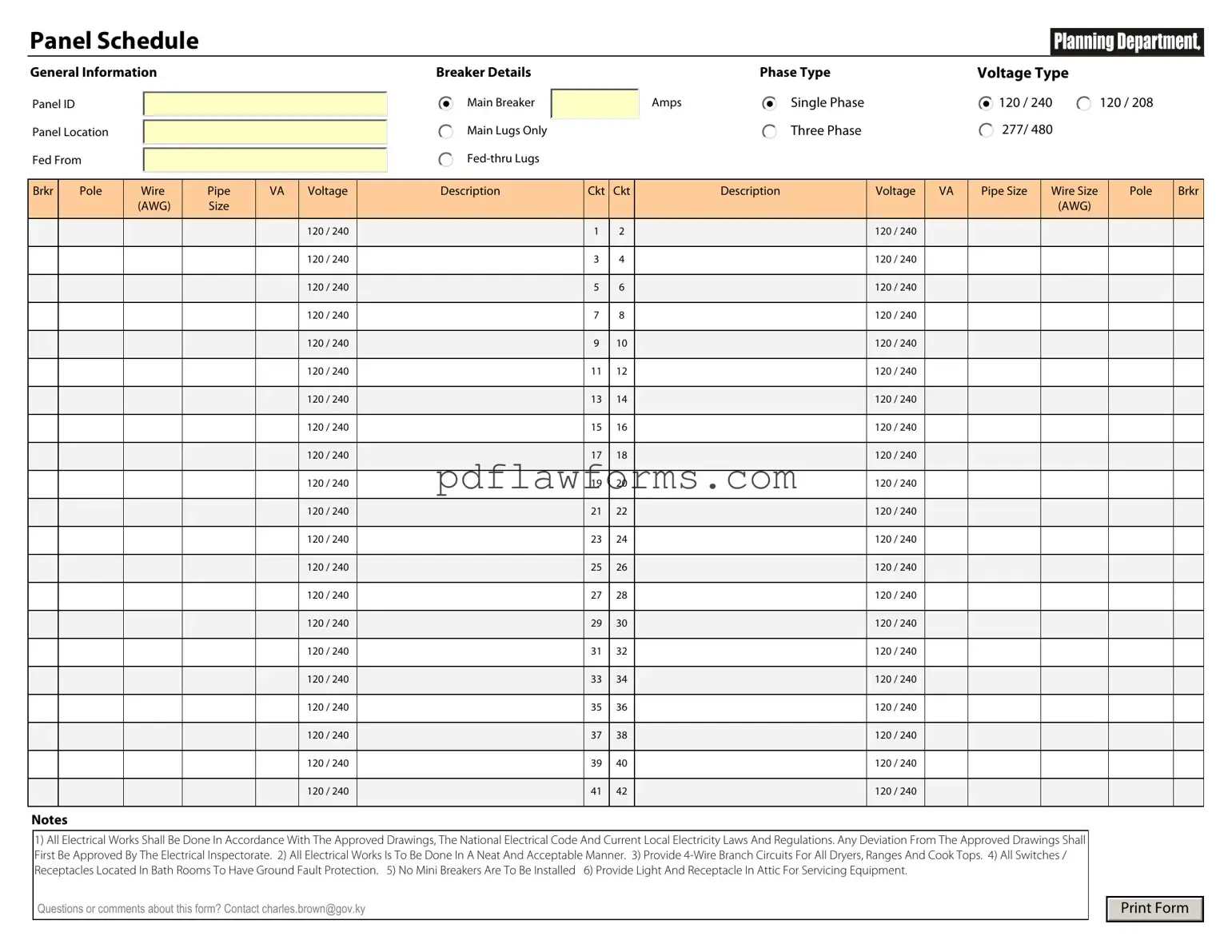Completing an Electrical Panel Schedule form is a crucial step in ensuring the safety and efficiency of electrical systems. However, many individuals make common mistakes that can lead to confusion or even safety hazards. Understanding these mistakes can help you avoid pitfalls and ensure that your electrical documentation is accurate and reliable.
One frequent error is failing to label circuits clearly. When circuits are not labeled correctly, it becomes challenging to identify their purpose or the areas they serve. This lack of clarity can lead to significant issues during maintenance or troubleshooting. Always ensure that each circuit is labeled with clear and concise descriptions.
Another mistake is neglecting to include the correct amperage ratings. Amperage ratings are essential for determining the capacity of each circuit. If these ratings are incorrect or missing, it can result in overloading circuits, which poses a serious safety risk. Double-checking these ratings can prevent potential hazards.
Some individuals also overlook the importance of voltage ratings. Just like amperage, voltage ratings must be accurate. Incorrect voltage ratings can lead to equipment malfunction or damage. It is vital to verify that the voltage specified matches the actual voltage supplied to the circuits.
Another common oversight is failing to update the schedule after modifications. Electrical systems often undergo changes, such as adding or removing circuits. If the schedule is not updated accordingly, it can create confusion and compromise safety. Regular reviews and updates of the panel schedule are essential.
In addition, not including the load calculations can be a significant mistake. Load calculations help determine whether the panel can handle the electrical demand. Omitting this information can lead to inadequate power supply or circuit failures. Always include load calculations to ensure proper functionality.
People sometimes forget to indicate the main breaker size. This information is critical for understanding the overall capacity of the panel. Without this detail, it may be difficult to assess whether the panel can safely handle the total load. Be sure to include the main breaker size for clarity.
Additionally, inconsistent formatting can lead to confusion. Using different styles or formats throughout the schedule can make it difficult for others to read and understand the document. Maintaining a consistent format helps improve readability and ensures that everyone can easily access the information they need.
Lastly, not consulting with a qualified electrician before finalizing the form can result in errors. Electrical work requires expertise, and a professional can provide valuable insights and corrections. Collaborating with a qualified electrician ensures that your Electrical Panel Schedule is accurate and compliant with local codes.
